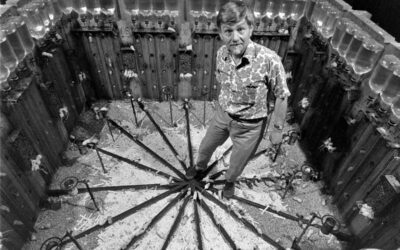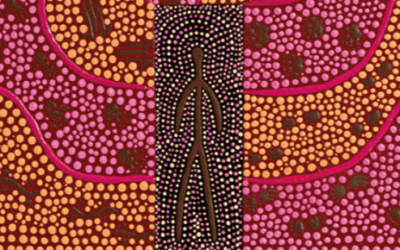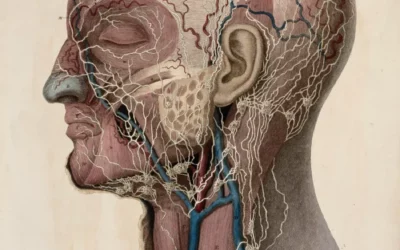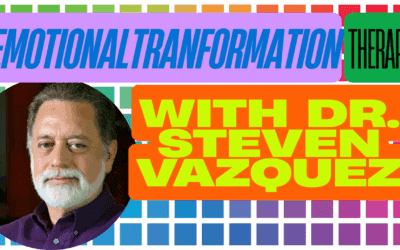What is Process-Oriented Psychology (Process Work) Therapy?
Process-Oriented Psychology, also known as Process Work, is an innovative approach to psychotherapy that integrates Jungian psychology, physics, Taoism, and shamanism. Founded by Arnold Mindell in the 1970s, Process Work focuses on exploring the deeper meaning behind everyday experiences, body symptoms, relationships, and world events. It aims to help individuals access their innate wisdom and creativity to navigate life’s challenges.
Key Principles and Assumptions of Process Work
- The Dreaming Process: Process Work posits that beyond our everyday identity lies a deeper, wiser self that is constantly dreaming our experiences into being. This “dreaming process” manifests through body symptoms, relationship dynamics, and synchronistic events.
- Edge States: When we encounter something unknown or disturbing, we tend to marginalize it, creating an “edge” between our primary identity and the disavowed experience. Process Work helps individuals explore and integrate these edges.
- Deep Democracy: Process Work embraces all aspects of the self and values the wisdom inherent in even the most challenging experiences. It advocates for a “deep democracy” where all voices, including those that are marginalized, are heard and included.
The Origins and Development of Process Work
Arnold Mindell: Founder and Visionary
Arnold Mindell, a physicist and Jungian analyst, developed Process Work in the 1970s. Born in 1940 in Schenectady, New York, Mindell studied physics at MIT before pursuing a Ph.D. in psychology at Union Institute. He trained as a Jungian analyst in Zurich, where he began to develop his unique approach to therapy.
Seminal Publications and Events
- Dreambody: The Body’s Role in Revealing the Self (1982): Mindell’s first book, which laid the foundation for Process Work by exploring the connection between body symptoms and unconscious processes.
- River’s Way: The Process Science of the Dreambody (1985): Further developed the theory and practice of Process Work.
- The Shaman’s Body: A New Shamanism for Transforming Health, Relationships, and the Community (1993): Expanded Process Work to include shamanic practices and community work.
- Establishment of the Process Work Institute (PWI) in Portland, Oregon (1989): A center for training and research in Process Work.
Influences and Inspirations
Process Work draws from a rich tapestry of influences, including:
- Jungian psychology: Mindell was deeply influenced by Carl Jung’s concepts of the collective unconscious, archetypes, and synchronicity.
- Quantum physics: Mindell’s background in physics informed his understanding of the interconnectedness of all things and the role of the observer in shaping reality.
- Taoism and Eastern philosophy: The Taoist principle of following the natural flow of events is central to Process Work.
- Shamanism: Process Work incorporates shamanic practices such as working with dreams, altered states, and ritual.
Cultural and Economic Context
Process Work emerged in the 1970s, a time of great cultural and social upheaval. The counterculture movement, with its emphasis on personal growth and alternative approaches to healing, provided a fertile ground for the development of new therapies like Process Work.
The increasing globalization and cross-cultural exchange of the late 20th century also influenced Process Work, which sought to integrate wisdom from diverse traditions. At the same time, the dominance of the medical model in mental health posed challenges to the acceptance of more spiritually-oriented approaches like Process Work.
Relationship to Other Therapies
Process Work shares some common ground with other experiential and body-oriented therapies, such as:
- Gestalt Therapy: Like Process Work, Gestalt therapy emphasizes present-moment awareness and the integration of disowned aspects of the self.
- Somatic Experiencing: Developed by Peter Levine, SE also works with the body’s innate wisdom to heal trauma.
- Jungian Analysis: Process Work builds on many Jungian concepts, such as the collective unconscious and archetypes.
However, Process Work is unique in its emphasis on the “dreaming process” that underlies all experience, and its inclusion of shamanic and Taoist principles.
Process Work Techniques and Interventions
Amplification
In amplification, the therapist encourages the client to fully inhabit and express a particular feeling, body symptom, or dream image. This can involve exaggerating a body movement, sound, or gesture, allowing the underlying process to unfold more fully.
Edge Work
Edge work involves exploring the “edges” between our primary identity and disavowed experiences. The therapist helps the client to gently approach and soften these edges, facilitating integration.
Dream Work
Process Work views dreams as messages from the deeper self. Therapists may invite clients to re-enter and explore a dream, dialoguing with dream characters and unfolding the dream’s deeper meaning.
Innerwork
Innerwork refers to the practice of mindfully attending to one’s inner experiences, such as body sensations, emotions, and thoughts. It is a form of self-exploration that can be done with or without a therapist.
Worldwork
Worldwork applies Process Work principles to working with groups, organizations, and communities. It aims to facilitate dialogue and understanding across differences, and to work with the collective “field” of a group.
Goals and Stages of Treatment
The overarching goal of Process Work is to help individuals access their innate wisdom and creativity to navigate life’s challenges. This involves:
- Developing awareness of one’s inner experiences and the “dreaming process” that underlies them.
- Exploring and integrating disowned aspects of the self (edges).
- Cultivating a “deep democracy” that values all aspects of the self and others.
- Applying insights from innerwork to relationships and the world at large.
The course of treatment is highly individualized, following the unique unfolding of each person’s process. Sessions may involve talking, movement, art, or ritual, depending on what best serves the client’s process.
The Evidence Base for Process Work
As a deeply experiential and individualized approach, Process Work does not easily lend itself to the kind of randomized controlled trials that are the gold standard in psychotherapy research. Much of the evidence for its effectiveness is anecdotal or based on case studies.
However, some research has been conducted on specific applications of Process Work, such as:
- A 2010 study published in the Journal of Humanistic Psychology found that Process Work interventions helped reduce stress and increase self-awareness in a sample of Japanese businessmen.
- A 2015 qualitative study in Psychological Services explored the use of Process Work in supporting the mental health of humanitarian aid workers, finding that it helped them to process difficult experiences and prevent burnout.
More research is needed to establish the efficacy of Process Work for specific mental health conditions. However, its emphasis on self-awareness, integration, and finding meaning in challenge suggests that it may be a helpful approach for many individuals.
Process Work in Practice
Process Work is practiced in a variety of settings, including:
- Individual psychotherapy
- Couples and family therapy
- Group facilitation
- Organizational consulting
- Conflict resolution
- Spiritual direction
Process Work therapists may work in private practice, clinics, hospitals, or community organizations. Some also lead workshops and retreats.
The Unique Contributions of Process Work
In a therapeutic landscape increasingly dominated by manualized, short-term approaches, Process Work stands out for its emphasis on depth, creativity, and following the natural unfolding of the psyche. Its integration of spiritual wisdom and its applicability beyond the therapy room also set it apart.
Some of Process Work’s unique contributions include:
- The concept of the “dreaming process” that underlies all experience
- The use of amplification to unfold the meaning in body symptoms and dreams
- The application of deep democracy to intrapsychic and interpersonal work
- The integration of shamanic practices into psychotherapy
While not a panacea, Process Work offers a rich and innovative approach to the age-old quest for healing, growth, and meaning. As the field of psychotherapy continues to evolve, Process Work’s emphasis on creativity, inclusivity, and the wisdom of the unconscious may well prove to be ahead of its time.
Bibliography and Further Reading
Mindell, A. (1982). Dreambody: The Body’s Role in Revealing the Self. Routledge.
Mindell, A. (1985). River’s Way: The Process Science of the Dreambody. Penguin.
Mindell, A. (1993). The Shaman’s Body: A New Shamanism for Transforming Health, Relationships, and the Community. HarperSanFrancisco.
Mindell, A. (1995). Sitting in the Fire: Large Group Transformation Using Conflict and Diversity. Lao Tse Press.
Mindell, A. (2000). Quantum Mind: The Edge Between Physics and Psychology. Lao Tse Press.
Mindell, A. (2010). ProcessMind: A User’s Guide to Connecting with the Mind of God. Quest Books.
Diamond, J., & Jones, L. S. (2004). A Path Made by Walking: Process Work in Practice. Lao Tse Press.
Reiss, G. (2019). Families in Transformation: Insights from Process Work. Routledge.


























0 Comments